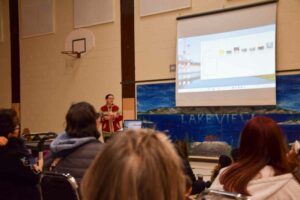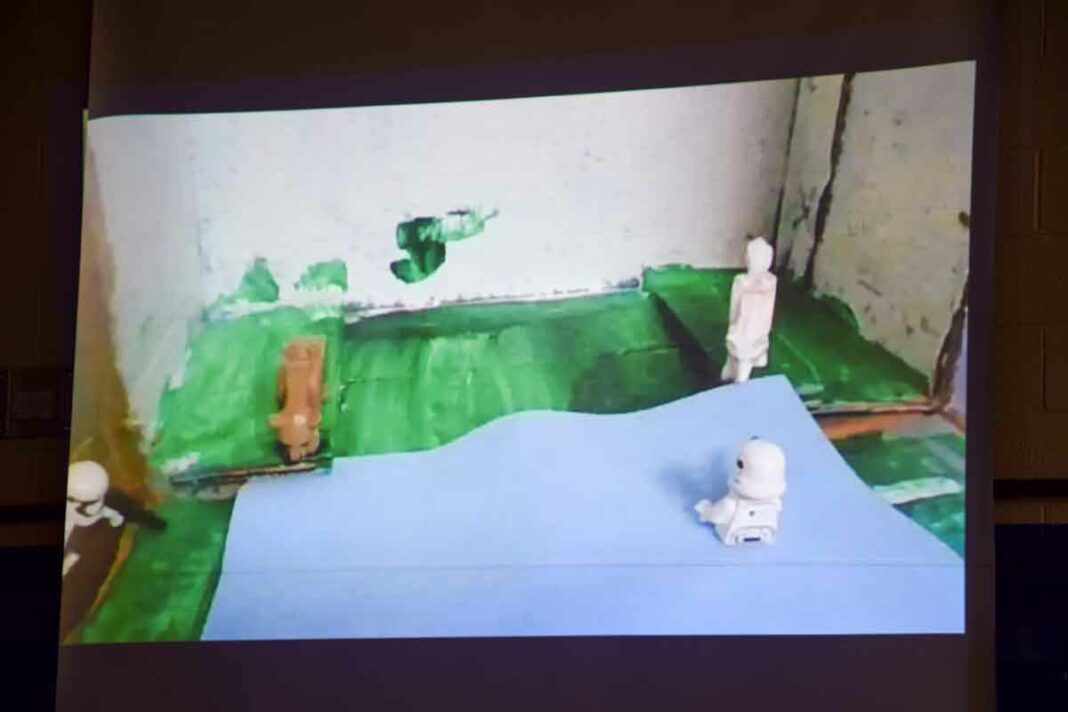M’CHIGEENG—Learning a language when you are immersed in a culture with a different language is not easy and often less than fun for some students, but educators at Lakeview School in M’Chigeeng First Nation have come up with an innovative way to engage students in building their knowledge of Anishinabemowin—claymation, or stop-motion filmmaking.
Under the tutelage of Anishinabemowin instructor Lisa McGregor, students at Lakeview School have been creating animated film shorts in the language.
“I am so proud of the work the students have all put into their projects,” said Ms. McGregor, who pointed out that the school year has been fraught with absences due to illness. “The work that they have done is amazing.”
Hard work might be a bit of an understatement. The students utilized a process called claymation, a form of stop-motion animation where each animated piece, including characters and some backgrounds, are usually constructed out of a malleable substance, typically plasticine clay. Each frame is then recorded on video, edited and then played back in rapid succession, giving the illusion of movement.

created by the students with stop motion claymation. Photos by Michael Erskine
“Each video takes hundreds and hundreds of shots,” explained Ms. McGregor.
The characters, props and backgrounds depicted in the animated shorts were each lovingly sculpted by the Grade 4 to Grade 8 students out of clay and then carefully shot, frame by frame, before editing.
Students provided the voiceovers for the action on screen completely in Anishinabemowin.
The clay sets and characters were on display on tables around the gymnasium at Lakeview School during a recent screening of the films, ‘Waabigan Miziniinsag Dibaajmoowaansan Mizinaatesjigaanhs Bi-Ganawaamnjigek.’ Howls of laughter accompanied each storyline, a sure indication that the young audience comprised of students, family members and caregivers were following along.
“I thought there is no reason it should be only me to see their work,” said Ms. McGregor. “They did a lot of work.”
“We used online software for the filming,” noted Ms. McGregor, a necessity due to the lack of sufficiently powerful laptops to go around. “We had to use Chromebooks, we only had five laptops spread out over all the students.” The editing software used by the students was Adobe’s Premiere Rush.
Despite the lack of film resources available to the students, the end results were quite amazing and remarkably professional, given the interrupted timeframes and the budding filmmakers tender years.
“This was just amazing,” said M’Chigeeng Ogimaa-kwe Linda Debassige, who joined the audience members during the screening of the student films. It was a theme shared by Anishinaabe historian Alan Corbiere, who also attended the screenings. “We didn’t even have internet when we were in school,” laughed Mr. Corbiere.





